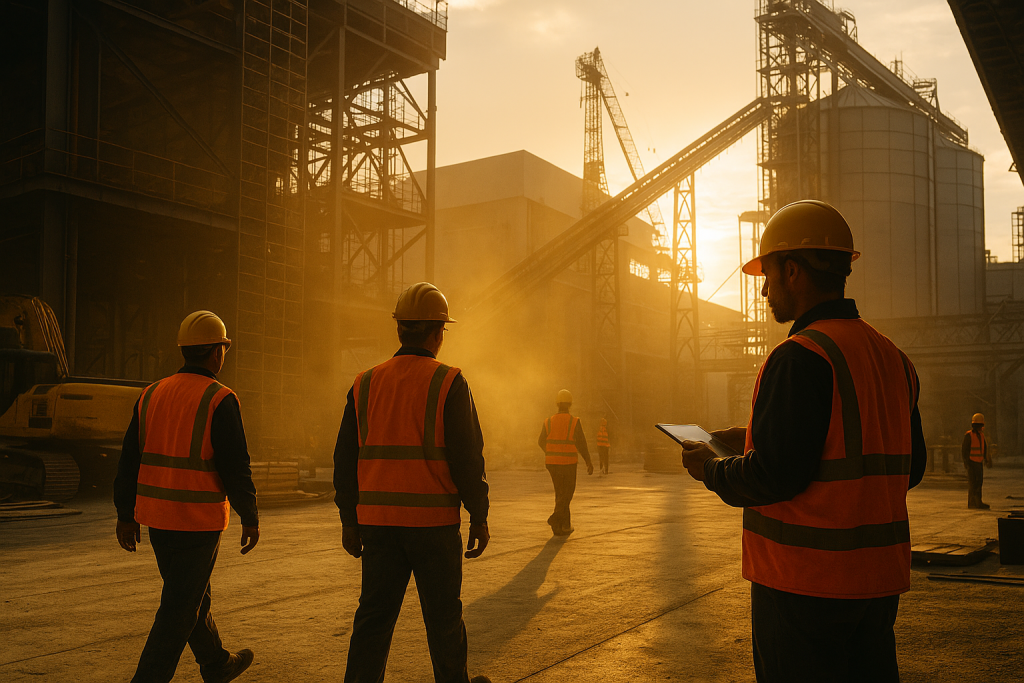
Why Industry-Specific Strategies Matter #
While general safety principles apply everywhere, each industry faces unique risks. Tailoring safety programs to these risks increases effectiveness and compliance.
Examples by Industry #
Construction:
Risks: Falls, equipment accidents, electrocution.
Key Controls: Fall protection systems, PPE training, equipment inspections.
Manufacturing:
Risks: Machine hazards, noise exposure, chemical handling.
Key Controls: Machine guarding, hearing protection, ventilation systems.
Healthcare:
Risks: Biological exposure, patient handling injuries, workplace violence.
Key Controls: PPE, lifting aids, de-escalation training.
Logistics/Warehousing:
Risks: Forklift accidents, slips and trips, poor ergonomics.
Key Controls: Traffic management, housekeeping, adjustable equipment.
Understanding industry-specific hazards is the cornerstone of an effective occupational health and safety (OHS) program. While safety principles are universal, the most significant risks and the most effective controls vary dramatically between sectors. For businesses in Ontario, aligning with the Occupational Health and Safety Act (OHSA) means conducting a thorough risk assessment and implementing controls tailored to your specific work environment.
Here is a breakdown of common risks and key safety controls for four major industries.
Construction: Managing High-Stakes Risks #
The dynamic nature of construction sites creates a high-risk environment. The most severe hazards, often called the “Fatal Four,” are:
Risks: Falls from heights (ladders, scaffolding, roofs), equipment accidents involving heavy machinery, and electrocution from power lines or unsafe temporary wiring.
Key Controls: Mitigating these risks requires strict adherence to fall protection systems (guardrails, harnesses), comprehensive PPE training, and daily pre-shift equipment inspections. Implementing lockout/tagout (LOTO) procedures is also critical for electrical safety.
Manufacturing: Guarding Against Plant Hazards #
Manufacturing plants combine heavy machinery and complex processes, leading to consistent exposure risks.
Risks: Machine hazards from unguarded moving parts, chronic noise exposure leading to permanent hearing damage, and improper chemical handling.
Risks: Essential controls include physical machine guarding, a robust hearing protection program, and engineered ventilation systems. Proper chemical management, guided by WHMIS 2015, is also non-negotiable.
Healthcare: Protecting Frontline Caregivers #
Healthcare workers face a unique combination of biological, physical, and psychological hazards.
Risks: Daily threats include biological exposure to pathogens, musculoskeletal injuries from patient handling, and the increasing danger of workplace violence.
Key Controls: A multi-faceted approach is needed, including consistent use of PPE, deploying mechanical lifting aids to prevent strain, and providing staff with practical de-escalation training to safely manage aggressive situations.
Logistics & Warehousing: Preventing Common Incidents #
The fast-paced warehouse environment is prone to accidents that are often preventable.
Risks: The most frequent incidents are forklift accidents involving pedestrians or racking, slips and trips from poor housekeeping, and ergonomic injuries from repetitive lifting.
Key Controls: A strong safety program emphasizes a clear traffic management plan, rigorous housekeeping standards, and investment in adjustable ergonomic equipment. Mandatory operator certification for forklifts is also a critical control.
Related Article #
#WorkplaceSafety #EHS #ConstructionSafety #ManufacturingSafety #HealthcareSafety




